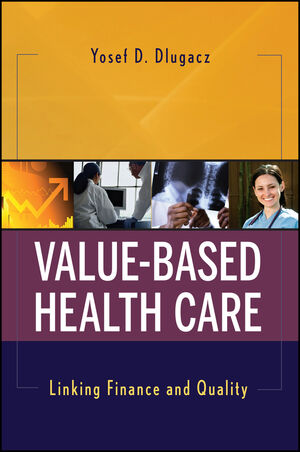|
Textbook
Value Based Health Care: Linking Finance and QualityISBN: 978-0-470-28167-3
Paperback
224 pages
November 2009, ©2010, Jossey-Bass
 |
||||||
Figures and Tables ix
Preface xi
Acknowledgments xiii
The Author xv
Introduction xvii
PART ONE BASIC PRINCIPLES OF QUALITY MANAGEMENT 1
1 DRIVERS OF CHANGE 3
Learning Objectives 3
External Drivers 5
Internal Drivers 11
Summary 20
Key Terms 20
Things to Think About 20
2 IMPROVING PATIENT SAFETY 21
Learning Objectives 21
Understanding Quality Measures 23
Working with Quality Information 24
Measuring Value 27
Asking Questions Via Data 30
Presenting Results 34
Effective Communication Improves Patient Safety 37
Summary 39
Key Terms 39
Things to Think About 39
3 FOCUS ON THE PATIENT 41
Learning Objectives 41
Effective Communication and Patient-Focused Care 43
Handoff Information Transfer 47
SBAR 47
Barriers to Effective Communication 48
Strategies to Reduce Barriers 50
Care and Communication Guidelines 51
Patient Education 52
Near-Miss Reporting 59
Chronic Disease Management 61
Task Forces 63
Patient Rights and Responsibilities 65
Compassionate Caring 65
Summary 67
Key Terms 68
Things to Think About 68
4 UNDERSTANDING PROCESSES, OUTCOMES, AND COSTS 69
Learning Objectives 69
Some Events Should Never Occur 70
Leaders’ Role in Good Outcomes 72
Physicians’ Role in Good Outcomes 74
Financial Value of Good Outcomes 76
Changing the Traditional Culture 77
Summary 86
Key Terms 86
Things to Think About 86
PART TWO GETTING DOWN TO BUSINESS 87
5 THE VALUE OF PREVENTION 89
Learning Objectives 89
The Promotion of Prevention 90
The Problems with Prevention 91
The Patient’s Role 92
Prevention Measures 93
Regulatory Groups’ Role in Prevention 94
Data’s Role in Promoting Prevention 95
Management of Chronic Conditions 99
Prevention in Ambulatory Care 101
Proactive Prevention in the Hospital 106
National Patient Safety Goals 107
Technology and Prevention 108
Summary 110
Key Terms 111
Things to Think About 111
6 THE COST OF SENTINEL EVENTS 113
Learning Objectives 113
Changing the Incident Analysis Framework 115
The Value of Root Cause Analysis 117
Monitoring Behavioral Health 121
Eliminating Never Events 124
Improving Error Reports 125
Quality Management’s Role in Controlling Adverse Events 126
The Traditional Hierarchy Leads to Errors 128
The Economics of Malpractice 129
Summary 130
Key Terms 131
Things to Think About 131
7 MANAGING EXPENSES IN A HIGH-RISK E NVIRONMENT 133
Learning Objectives 133
Improving Cost in the ICU 134
Match the Resources to the Patient 136
End-of-Life Care 137
Sustaining Change 138
Improving Operating Room Efficiency 141
Improving Oversight 142
Managing Throughput 143
Summary 146
Key Terms 147
Things to Think About 147
8 IMPROVING COMMUNICATION AND ESTABLISHING TRUST 149
Learning Objectives 149
Developing Trust 150
The Role of Quality Management in Increasing Trust 151
Transparency, Tracers, and Trust 151
Establishing a Common Language 157
Sustaining Change 159
Monitoring Care 160
Assessing Competency 163
The Role of Regulatory Requirements in Ensuring Competency 164
Medical Staff Credentialing 165
Objectifying Competency 165
Staffi ng Effectiveness 168
Promoting Competency 169
Summary 169
Key Terms 170
Things to Think About 170
9 PROMOTING A SAFE ENVIRONMENT OF CARE 171
Learning Objectives 171
Communication Across Disciplines 172
Working Together to Identify and Solve Problems 174
Improving Processes 175
Monitoring Safety 176
Ensuring Accountability 178
Maintaining a Safe Environment 180
Establishing Oversight 180
Communicating About Safety 181
Assessing and Improving the Environment 182
Summary 183
Key Terms 184
Things to Think About 184
10 CONCLUSION 185
REFERENCES 191
USEFUL WEB SITES 195
INDEX 197



